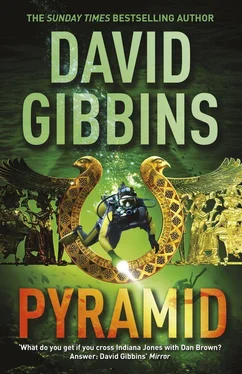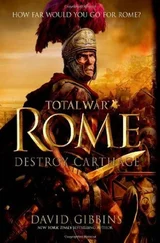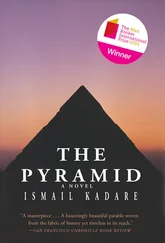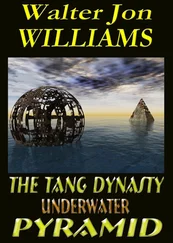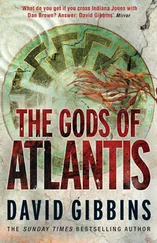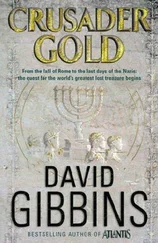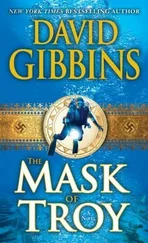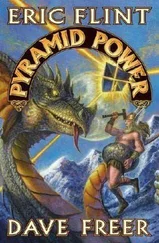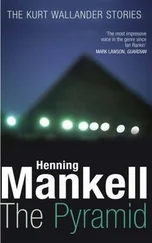Jack took a deep breath. “Time to go.”
Forty minutes later Costas eased off on the throttle of the aquajet and they slowed down to swimming speed, allowing Jack to relax his grip on the handle and focus more on the tunnel around them. The most telling feature so far had been a line of foot-sized indents carved into the side walls at intervals of about a meter and running the entire length of the tunnel from the outset.
Jack had recognized the indents not from ancient parallels but from the Black Country in England, where he had once explored an underground canal from the time of the Industrial Revolution and seen where the bargemen had lain down and walked their vessels along the walls of the canal. The same had happened here, three thousand years earlier, only the Egyptians with their engineering exactitude had provided their bargemen with secure footing along the entire length of the canal. For Jack it was confirmation that this was indeed a passageway for boats to make their way between the Nile and the Giza plateau, with the Nile at low water lapping just below the level of the footings.
The tunnel could have accommodated vessels up to three meters in beam and one and a half meters in draft, large enough for the type of river barges that plied the surface canals to the pyramids during their construction. They had been hauled by teams of oxen and slaves plodding along the towpath just like those English canal boats of the nineteenth century that Jack had examined.
Costas reduced the speed by a further setting and Jack felt the wake wash forward, his legs dropping with the reduced momentum. He could see nothing but the receding darkness of the tunnel ahead, and he felt a niggle of unease again. “Do we have a problem?”
“I’m trying to reduce the drain on the battery. We’re not at critical yet, but it’s showing the orange warning light.”
“What do you make of our position?”
“In the absence of GPS reception down here, we can only go by dead reckoning. The tunnel has maintained a straight course almost exactly due west, bearing toward the southern end of the Giza complex in front of the Pyramid of Menkaure, just as Lanowski mapped it. And the aquajet’s computer calculates a lapsed distance of four point three kilometers. That puts us a kilometer or so from the point where Lanowski thought the tunnel could break above the water level.”
“If the tunnel links to the complex we saw from beneath the pyramid, then it has to rise above the water level,” Jack replied. “The intensity of light we saw reflected through that shaft in the pyramid could only have come from mirrors set up in dry spaces, as refraction through water couldn’t have produced anything so bright.”
“We have to hope that the other radiating arms on that map represent tunnels that are above water too. Otherwise we’re dependent on finding an exit from the main complex, and if that means the shaft we saw from beneath the pyramid, then we’re going nowhere. The shaft had been filled with masonry so that the aperture for the light was a slit less than half a meter high. There’s no way we’re getting through that.”
“While you were in never-never land today on the felucca, Lanowski and I worked up a best-fit CGI for what might lie ahead of us. The plaque from the shipwreck, the one that shows the Aten symbol superimposed on the Giza plateau and the desert, had a total of eight arms radiating southeast to northeast toward the Nile, all of them extending out from the sun symbol that we imagine represents the central complex below the plateau. Our tunnel is the second arm from the bottom, the one running nearest to due east. We guessed that two of the other arms might also represent actual tunnels or canals and not just be symbolic depictions. One of them must be the aboveground canal used during the months of the year when the Nile was in full spate, when the tunnel we’re in would have been completely submerged and unusable. We think the above-water channel may well have been the canal already in existence from the time of the pyramid construction, adapted and perhaps strengthened by Akhenaten’s engineers.”
“You mean the canal from the Nile to the artificial harbor that was dug in front of the pyramid, beside the mortuary temple?”
“Right,” Jack replied. “Each of the pyramids originally had one. All trace of the above-water canal from the Pyramid of Menkaure has been lost beneath the southern suburbs of Cairo, but we think it’s likely to be the next radiating line of the Aten symbol to the north of us, at an arc of thirty degrees from our tunnel and reaching the Nile about two kilometers north of our entry point. But it’s the line above that one that interests us most. When Lanowski superimposed the depiction from the plaque on the modern map, keeping to the exact alignment of the pyramids, not only did our line end up exactly at the Napoleonic fort, but the line two up from that, the one I’m talking about, abutted the river directly opposite Fustat, Old Cairo.”
“Which didn’t exist in antiquity,” Costas said.
“Not as we see it now. But knowing about the masonry block with the Akhenaten cartouche found in 1892 by those Royal Engineers officers beside the synagogue confirms what Maurice has long suspected, that the other blocks of that date found in the medieval walls of Fustat were not all reused from Akhenaten’s great temple at Heliopolis, to the northeast of Fustat, but included material from a structure whose remains lie beneath the boundaries of medieval Fustat itself. If you extend the Aten line across the river, it points almost exactly to the site of the synagogue.”
“So you think all these features from Akhenaten’s building program were interconnected — the Heliopolis temple, the structure under the synagogue, and this complex in front of the pyramids.”
“The Egyptians were really into alignments, right? It’s the kind of thing you can do in the desert over long distances, by line of sight. Maurice thinks that this was intimately tied up with worship of the sun, and that the Aten symbol with its very precise radiating lines suggests a particular fascination for Akhenaten himself. Maybe the passion for geometry that shows in the planning of his capital at Amarna should lead us to look for the same kind of grandiose conception here. With polished stone surfaces you can make the rays of the sun link together distant places, something that we might see in microcosm in the mirrors that we know must direct the light beneath the plateau. But Lanowski and I concluded that the line leading to Fustat may well represent another real tunnel, one likely to be above the flood level of the Nile so that it could be used all year round. The tunnel we’re in now and the above-water canal were used mainly for barging in building materials and other goods, at low water and high water, respectively. The tunnel from Fustat might have been some kind of processional way for priests and even the pharaoh himself.”
“Whoa.” Costas put the aquajet in neutral and pointed to the wall on his side. A flight of narrow rock-cut steps led upward to an aperture in the ceiling. “That’s exactly what I’ve been expecting,” he said. “While you had your head down earlier as we were going at full throttle, I saw several small dark openings in the ceiling that must once have been ventilation shafts, long ago blocked by sand and rockfall. This one looks more like a service entrance, something you’d expect partway along a tunnel of this length.” He released the handle of the aquajet, rose to the ceiling, and poked his head into the hole. “No good for us. It’s completely filled with a jumble of rock.”
“You sure?”
“I wouldn’t even want to try. Pulling out one of those rocks might create an instant rockfall and bury us.”
Читать дальше
